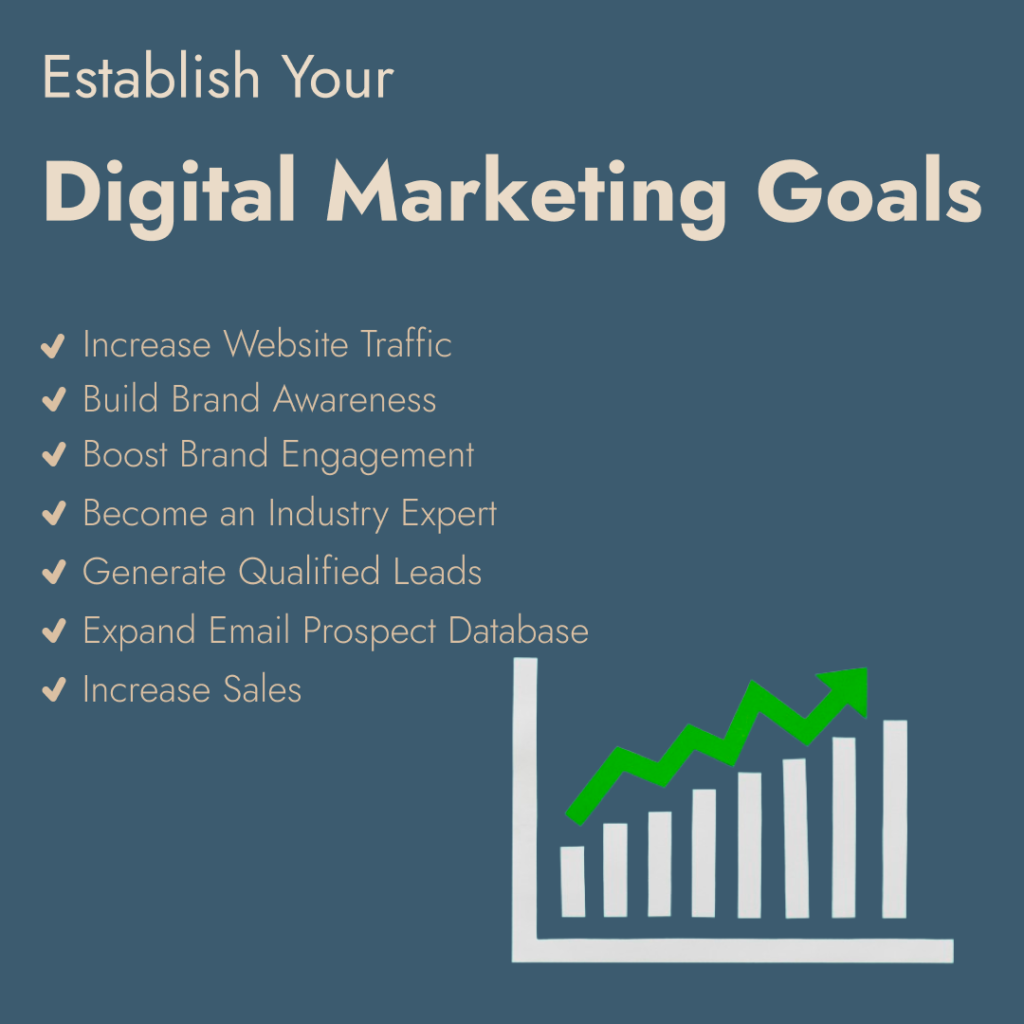Digital marketing has revolutionized the way businesses connect with their audience, enabling them to reach global markets with unparalleled precision and efficiency. However, to harness the full potential of digital marketing, it’s essential to adhere to best practices that drive success. This blog will explore these best practices, covering goal setting, audience targeting, budgeting, method selection, and performance tracking.
Establish Your Digital Marketing Goals
The foundation of any successful digital marketing campaign lies in setting clear, measurable goals. These goals should be SMART: Specific, Measurable, Achievable, Relevant, and Time-bound. By defining what you want to accomplish, you can create a focused strategy that guides your marketing efforts.
Examples of Top Digital Marketing Goals:
- Increase Website Traffic: Attracting more visitors to your website can lead to higher brand visibility and more opportunities for conversion.
- Build Brand Awareness: Enhancing recognition and recall of your brand among your target audience.
- Boost Brand Engagement: Encouraging interactions with your brand through likes, shares, comments, and other forms of engagement.
- Become Known as an Industry Expert: Establishing your brand as a thought leader in your industry through valuable content and insights.
- Generate More Qualified Leads: Attracting prospects who are more likely to convert into customers.
- Expand Your Email Prospect Database: Growing your list of potential customers for email marketing campaigns.
- Increase Sales: Ultimately driving revenue growth through effective marketing strategies.

Define Your Target Audience
Knowing your audience is crucial for crafting relevant messages and choosing the right marketing channels. A well-defined target audience allows you to tailor your content and approach, increasing the chances of resonating with potential customers.
Steps to Define Your Target Audience:
- Identify Shared Attributes: Consider demographics such as age, gender, income, education levels, geographic locations, interests, and purchasing patterns.
- Understand Their Needs and Problems: Identify the specific issues your audience faces or the desires they have. This understanding will help you create content that addresses their pain points or fulfills their needs.
With a clear target audience, you can develop digital marketing messages that highlight how your products or services solve their problems or satisfy their desires.
Determine Your Digital Marketing Budget
A well-planned budget ensures you don’t overspend or underspend on your marketing efforts. By setting clear marketing goals and success targets, you can allocate your resources effectively.
Budget Planning Tips:
- Break Down Costs by Channel: Decide whether to allocate a budget for each digital channel or an overall budget for all efforts.
- Consider Technology Costs: Account for SEO software, email marketing tools, website hosting, and social media management platforms.
- Research PPC Costs: If you plan to use pay-per-click (PPC) advertising, research the costs associated with different platforms. Google Ads and social media channels provide detailed information about PPC costs.
- Factor in Additional Services: Include costs for copywriting, videography, and design. Depending on your budget, you may choose to hire a traditional marketing agency or freelancers from platforms like Upwork, Fiverr, or Freelancer.com.
Select Your Digital Marketing Methods
The methods you choose should align with your goals, target audience, and budget. Here are some of the most effective digital marketing techniques:
- Website Development: A professional, user-friendly website is the cornerstone of your digital presence.
- Search Engine Optimization (SEO): Optimize your website to rank higher in search engine results, driving organic traffic.
- Content Marketing: Create and distribute valuable content to attract and engage your audience. This includes blog posts, videos, infographics, and more.
- Social Media Marketing: Use platforms like Facebook, Twitter, Instagram, and LinkedIn to connect with your audience, share content, and build brand loyalty.
- Email Marketing: Send targeted emails to your subscriber list, offering valuable content and promotional offers.
- PPC Advertising: Use paid ads on search engines and social media to quickly reach a broader audience.
Track and Analyze Results
One of the significant advantages of digital marketing is the ability to track and analyze results. By monitoring performance data, you can measure how well your campaigns are doing against your established goals.
Tracking and Analysis Tips:
- Set a Monitoring Cadence: Determine how often you’ll check your digital marketing performance data—daily, weekly, or monthly. Daily monitoring is useful in the initial stages or when spending is high.
- Analyze Performance Metrics: Look at key metrics such as website traffic, conversion rates, engagement levels, and return on investment (ROI).
- Refine Your Strategies: Use the insights gained from your analysis to tweak and improve your digital marketing strategies. Remember, few campaigns achieve stellar results immediately. Continuous learning and adjustment are key to long-term success.
Conclusion
Digital marketing offers immense potential for businesses willing to embrace best practices and adapt to the ever-evolving digital landscape. By establishing clear goals, defining your target audience, budgeting wisely, selecting the right methods, and continuously tracking and analyzing results, you can create effective digital marketing campaigns that drive significant business results.



